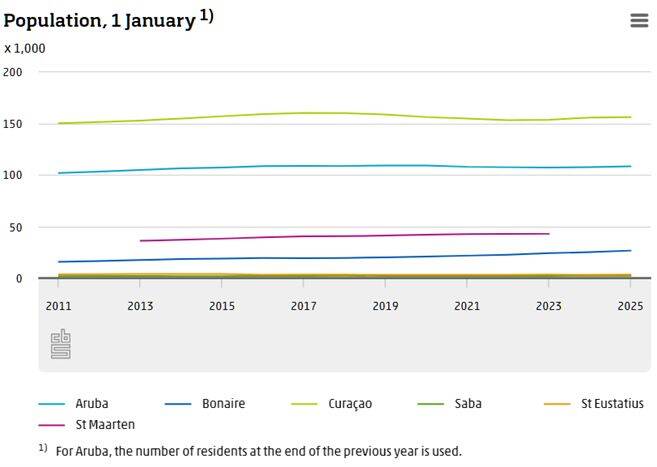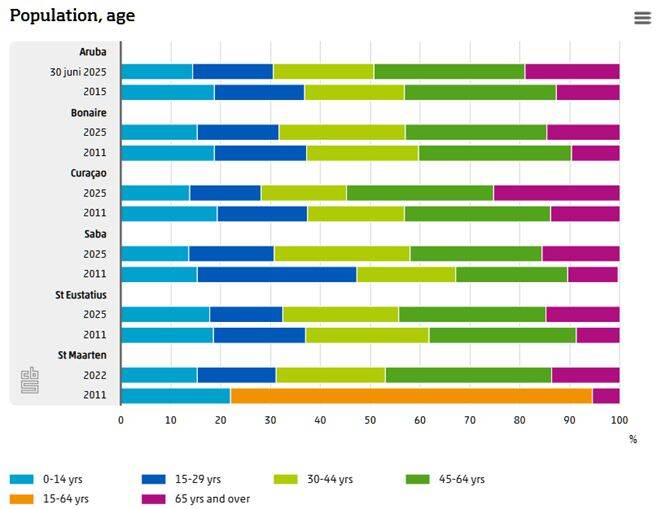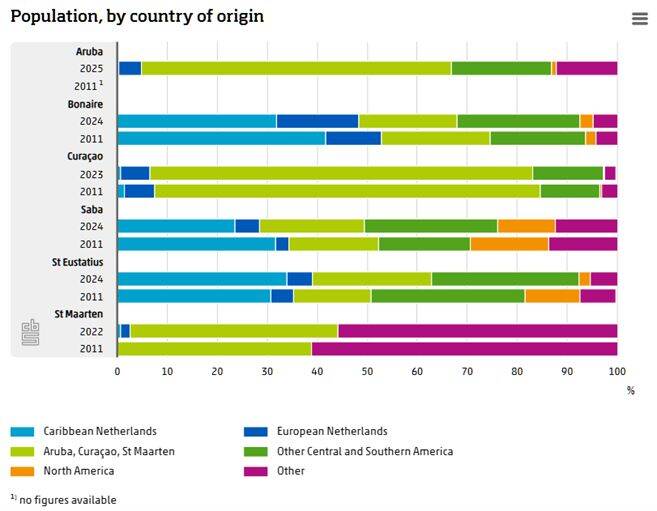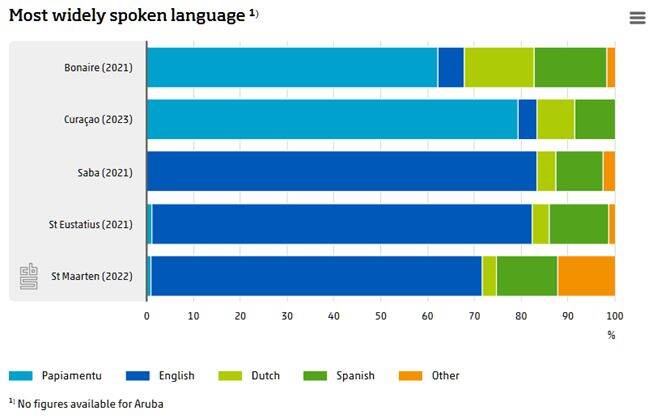Population of the Dutch Caribbean has grown over fifteen years
According to the latest figures, the population of the Caribbean part of the Kingdom of the Netherlands has increased by 8 percent since 2011. The population of Bonaire has grown in particular. In addition, the composition of the population on the islands has changed and the population is ageing more rapidly. Unemployment is lower on all islands, however. This is according to the most recent figures from Statistics Netherlands (CBS).

The Caribbean part of the Kingdom has more than 330 thousand inhabitants in 2025. Curaçao has the largest population of any of the islands with 156 thousand residents, followed by Aruba with 108 thousand. St Maarten had a population of 43 thousand in 2023, according to the latest figures.
In 2025, Bonaire is the island with the largest population of the Caribbean Netherlands by far (almost 27 thousand residents), while St Eustatius and Saba have a population of over 3 thousand and 2 thousand, respectively. Bonaire in particular has experienced tremendous growth of nearly 70 percent, mainly due to migration.

Rapidly ageing population
The population of all the islands is ageing more rapidly, particularly Curaçao. A quarter of its population is now aged 65 years or older. In 2011, this was under 14 percent. In the Caribbean Netherlands, the number of seniors is much lower: around 15 percent of the population is aged 65 years or older. In 2011, the share was 10 percent.

The composition of the population has changed
On Bonaire, the share of residents born on the island fell from 42 percent in 2011 to 30 percent in 2025. The share of residents born in the European Netherlands rose from 11 percent to 17 percent, and the share of residents born in South and Central America increased from 19 percent to 26 percent.
On Saba, the share of residents born on the island decreased from 31 percent to 22 percent, while the number of residents originating from South and Central America is rising. On St Eustatius the share of residents born on the island is up by over 3 percent.
On Curaçao and Aruba, the share of the population born on the island has remained almost the same, while on St Maarten, the share has decreased slightly.

Papiamentu and English spoken the most widely
On Curaçao, 80 percent of the population speaks Papiamentu. On Bonaire, the share is 62 percent. Spanish and English are also spoken on Bonaire (both at 15 percent). On Aruba, however, Papiamento is the most widely spoken language. Papiamentu and Papiamento are two variants of the same language: the main difference between them are spelling and sometimes pronunciation.
English is the most widely spoken language on St Maarten, Saba and St Eustatius. On Saba, 83 percent of residents speak English. On St Eustatius, the share is 81 percent and on St Maarten it is 71 percent.

Unemployment lower on most islands
Unemployment on Curaçao was down from 13 percent in 2014 to 8 percent in 2024. A fall in unemployment was also seen on Aruba between 2016 and 2024 (from 8 percent to 4 percent). The unemployment rate on Bonaire was 2 percent in 2024 compared to 6 percent in 2012.
Unemployment rose on St Eustatius, from 3 percent in 2012 to 4 percent in 2024. Saba has the lowest unemployment rate at 1 percent.
Prices rose by the most on Curaçao
In 2024, prices on Curaçao were up by 37 percent compared with 2011. Prices on Aruba rose by the least, at 13 percent. Inflation is generally at around 2 percent annually for most of the islands, but the year 2022 was an exception. Inflation was elevated on all islands in the Caribbean part of the Kingdom of the Netherlands in 2022: from nearly 4 percent on St Maarten to 10 percent on Bonaire.
Source:
Publication - The Dutch Caribbean fifteen years after state reform | CBS